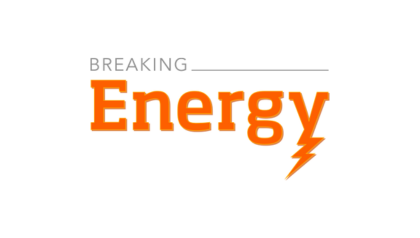Germany’s Siemens, a global powerhouse in electronics and electrical engineering, appears to have received approval from California’s Air Resources Board (CARB), one of five units within the state Environmental Protection Agency (EPA), to built a test track and implement its eHighway concept for heavy-duty trucks, as was first reported by Germany’s Spiegel-Online. Emission standards for ‘mobile’ sources are primarily regulated by state or federal agencies, such as the CARB and the US EPA, instead of local agencies. The report notes that the first ‘eHighway truck’ is supposed to hit the road in July 2015, initially scheduled for a test period of one year. Interestingly, the eHighway test track is said to be located close to Carson south of Los Angeles on Interstate I-710, which is a highly frequented highway. But there is more.
Two Major Ports Side-By-Side in San Pedro Bay
Source: Google Maps
The above cutout map shows two major US ports located side-by-side in San Pedro Bay competing for business; namely, the Port of Los Angeles and the Port of Long Beach, which combined, according to the latter’s website, rank as the world’s sixth busiest port complex in terms of number of cargo containers shipped through the two ports. No wonder that further processing of cargo and its distribution – to warehouses, distribution centers, rail yards, and industrial facilities – add to the traffic congestion along the highways.
According to the local South Coast Air Quality Management District (AQMD), which serves as air pollution control agency for an “area of 10,743 square miles, home to over 16.8 million people (…), the second most populated urban area in the United States and one of the smoggiest,” about 75 per cent of the ozone-forming air pollution here originates from “mobile sources – mainly cars, trucks and buses, but also construction equipment, ships, trains and airplanes.” Unsurprisingly, this seems to be an ideal location for Siemens to prove its eHighway concept, and as a consequence generate future lucrative business opportunities and, above all, potentially help make the global logistics business again a little bit more cost effective as well as more environmentally friendly. Spiegel-Online cites Siemens’ hope of creating a “Zero Emission Corridor” where eHighway heavy goods vehicles (HGVs) shuttle back and forth over relatively short distances.
To put the above into perspective, the US National Highway System (NHS) comprises about 200,000 miles of roadway with nearly 11 million single-unit and combination (tractor-trailer) trucks in the system. EPA data show that in 2012, greenhouse gas emissions from transportation contributed 28 per cent to total US GHG emissions, thereby only trailing the US power generation sector, which accounted for 32 per cent of the total. A little less than half of the GHG emissions come from freight trucks, commercial aircraft, ships, boats, and trains as well as pipelines and lubricants, the EPA explains further.
Total US GHG Emissions by Economic Sector in 2012
Source: EPA
This clearly illustrates the importance of making a dent in carbon emissions stemming from the trucking/logistics industry. By initially focusing on a relatively small segment of the transportation sector – heavy goods vehicles (HGVs) – this could turn out to be a win-win situation for the industry by reducing costs and for the environment by reducing carbon emissions. Moreover, the latter would put the CARB – responsible for implementing the California Global Warming Solutions Act (AB32) – in a better position to meet its 2020 emission reduction target.
What is the eHighway concept/technology?
Siemens refers to the concept as “electrification of road-freight traffic” – an efficient, economical, environmentally friendly system – operating very much like an electric tramway (trolley car) – that can also be seamlessly integrated in any existing infrastructure. The concept consists of three core components; namely,
1. Diesel-electric hybrid technology
2. Power supply via catenary lines and regenerative braking
3. Intelligently controllable pantograph for energy transmission
The three components work together as follows:
“In normal operation, eHighway HGVs draw electric energy from a catenary system using an adaptive pantograph to establish contact with the overhead wire. Wherever there is no overhead line, the eHighway HGVs automatically switch over to their diesel-hybrid drive system. This means that they can be used just as flexibly and universally as conventional HGVs.”
eHighway Heavy Goods Vehicle
Source: Siemens
An especially notable feature is the hybrid drive system, which is indispensable on highways and roadways without catenary lines. In this respect, Siemens points to the fact that “the diesel engine’s output is transmitted to the generator, which in turn powers the downstream electric motor turning the cardan shaft. [Moreover], the eHighway concept provides ample scope for a variety of hybrid drive technologies. The essential main components that were tried and proven in (…) tests were: generator, rectifier, buffer store, inverter, traction motor.”
Heavy Goods Vehicle Hybrid Drive System
Source: Siemens
You can watch a company video explaining the eHighway technology here.





